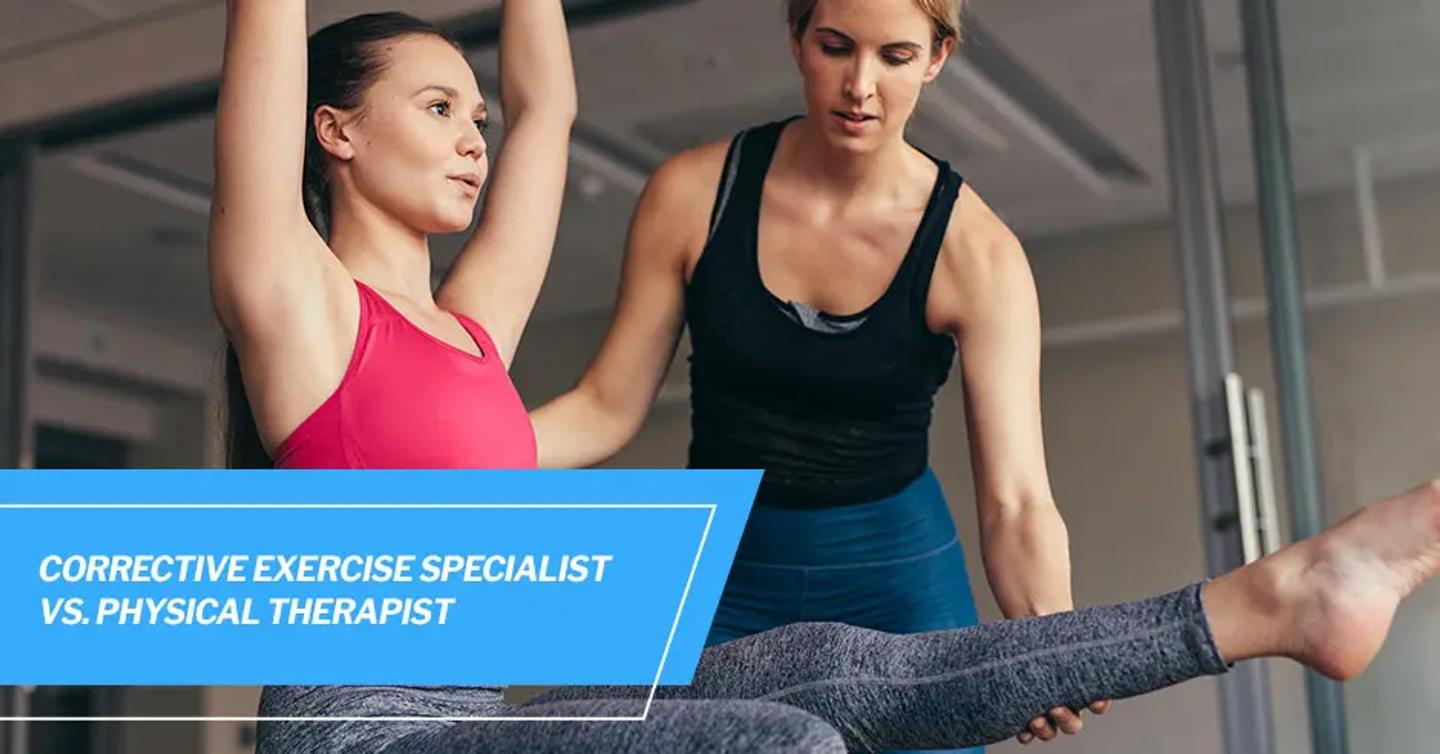
Corrective Exercise Specialist vs. Physical Therapist
Reading Time: 3 minutes 34 seconds
BY: ISSA
DATE: 2019-08-07
The term corrective exercise specialist is becoming more popular with fitness professionals and physical therapists. With that, we also see the line between the professions getting blurred.
There can be a lot of confusion around this topic on which professional can do what and what the scope of practice is. The most common questions asked about that is what is the difference between a corrective exercise specialist and a physical therapist? What can I do as a corrective exercise specialist?
What is a Corrective Exercise Specialist?
Typically, corrective exercise specialists are fitness professionals such as personal trainers or strength and conditioning coaches. Being a corrective exercise specialist is a great advantage in the fitness industry. It allows you to help clients avoid injuries and move better overall.
First, know that a corrective exercise specialist is not a medical professional. This means they cannot diagnose a medical condition or give manual therapy.
However, what they can do is evaluate and assess a client's movement and posture.
When they do an assessment, they are looking for:
Musculoskeletal system for any imbalances
Movement patterns
Muscle dysfunction
Movement restrictions
Overall ability to move well
Consider the fact that most clients sit at a desk all day staring at a computer screen. And this isn't limited to the typical office worker anymore. This can even start at a young age with smartphones playing a larger role in our everyday lives.
The most common imbalances a fitness professional will see are:
Shortened hip flexors
Forward head posture
Rounded spine
Anteriorly rotated shoulders
What is a Physical Therapist?
A physical therapist must have a doctorate, which, along with a bachelor's degree, usually takes six to seven years to complete. They are also a licensed health care provider, which means they can diagnose and treat an injury or condition.
Typically, they treat acute or chronic injuries. Their main goal is to teach patients how to manage or rehabilitate their condition.
Visits to a physical therapist are often paid for through insurance. Once the allotted number of visits runs out, it can get costly for the client. However, if the physical therapist or doctor releases the patient, this is when a patient can then turn to a corrective exercise specialist. They'll be able to continue the rehabilitation and conditioning at a typically more flexible rate.
What can I do as a Corrective Exercise Specialist?
Movement and postural dysfunctions are a growing need for corrective exercise specialists. As a corrective exercise specialist, you are in a unique position to be a preventative factor for your clients by helping them avoid injury. If you ever suspect something is outside your scope of practice, never hesitate to refer them to a medical professional.
Network with doctors and physical therapists in your area and create partnerships. That way, when they have clients ready to start training again and need a personal trainer, they can send them your way. And when you have a client issue outside your scope of practice, you can refer them to that physical therapist or doctor.
As a corrective exercise specialist, you can educate your clients on corrects to make for everyday life to help them move better. You can assess their muscle imbalances and create a specialized training program from that.
What are the Benefits of Corrective Exercise?
There are three main benefits of corrective exercise: improve performance, restore performance, and reduce injury risk.
Improve Performance
You may have clients who are very active and have not experienced an injury or pain. These clients may not realize they can benefit from corrective exercise. This is another reason why doing an assessment on every client is important.
You can uncover muscle weaknesses, stiff joints, or even poor motor control. A corrective exercise program for any of those can help improve their performance even more.
Restore Performance
When it comes to restoring performance, there are two types of clients.
The first will be athletes or those with athletic hobbies. The other is your everyday client who just wants to do things like play with their grandchildren without any pain or movement restrictions. The second set of clients is the type you will most often meet. They are also the ones who will feel the biggest impact on their everyday lives and general health.
Reduce Injury Risk
The reality is that life happens, and injuries happen. No one can fully prevent an injury. What you can do, however, is prepare the body as much as possible to reduce those risks.
As a corrective exercise specialist, you'll supply a training program and workouts ensure your client's muscles and joints have proper strength and mobility and that the nervous system can then control muscle activation. That way, when they step on that icy spot or someone bumps into them, their body will be able to respond in a way that reduces the risk of injury.
If you want to learn more about corrective exercise and how to add it to the services you offer clients, check out the ISSA's Corrective Exercise Specialization and enroll today!